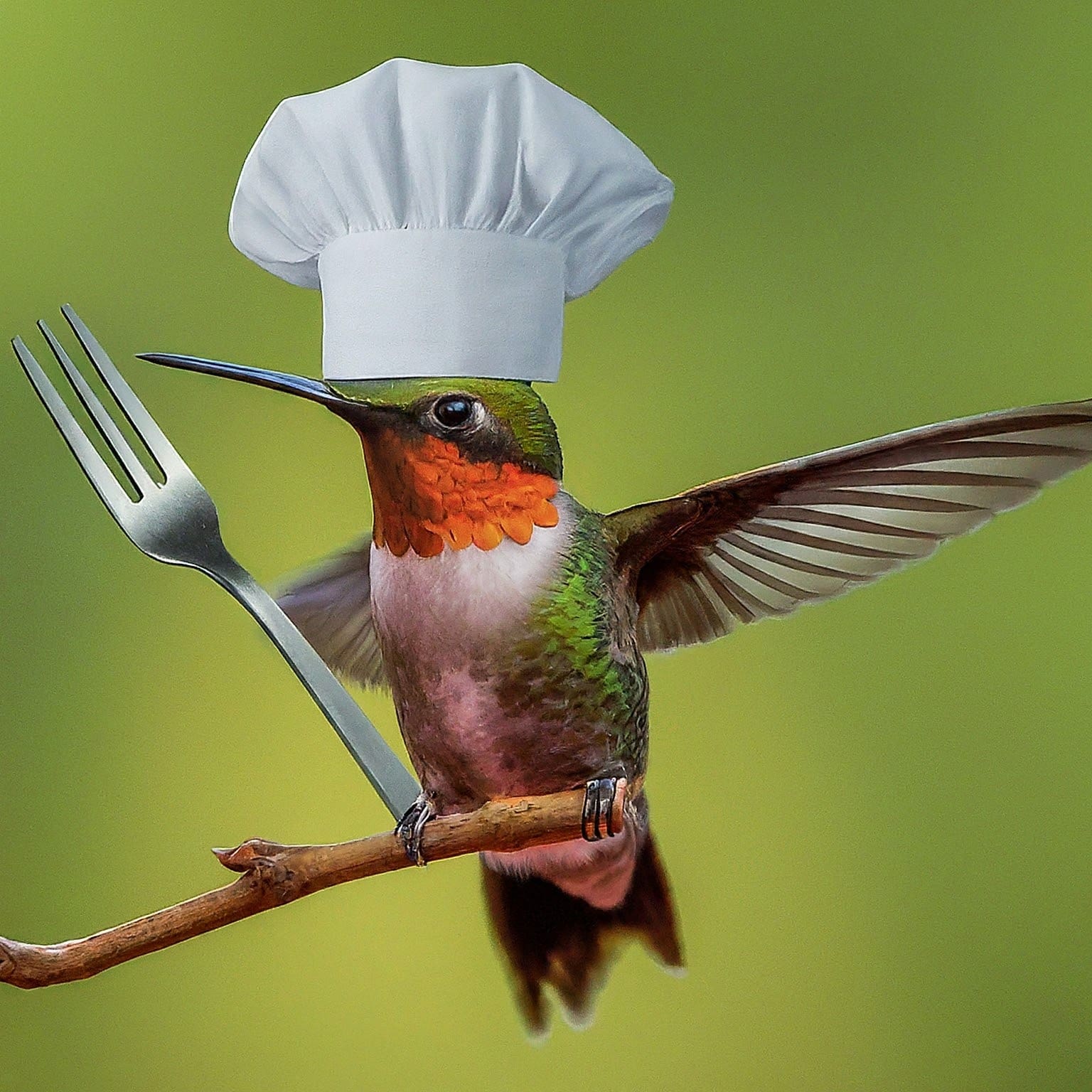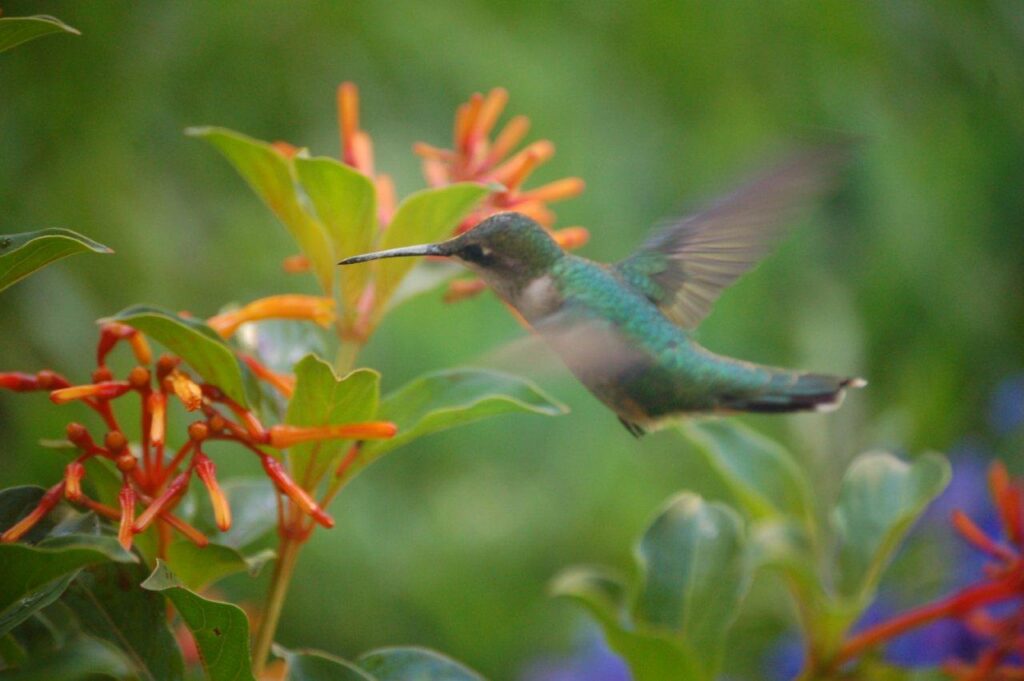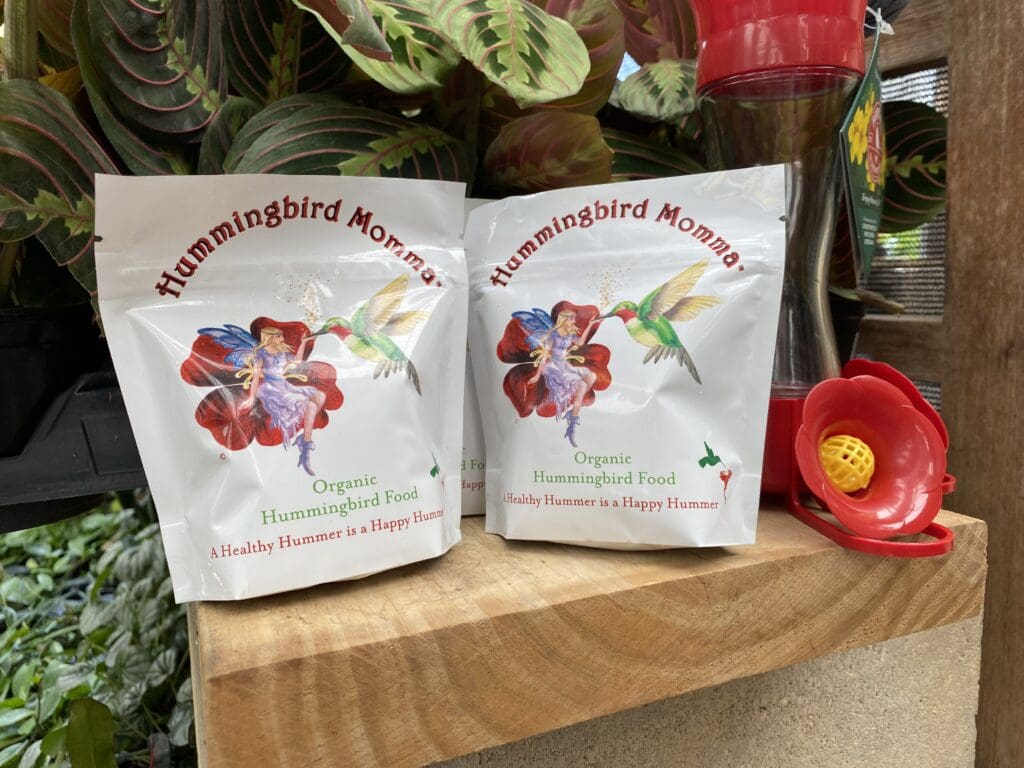It’s almost that magical time of year again when ruby-throated hummingbirds make their way through the Coastal Bend on their way south for the winter! Expect to start seeing hummingbirds around town any day now, with peak numbers around mid-late September, right in time for the Rockport-Fulton Hummerbird Celebration. With our hungry guests arriving very soon, it’s time to set the table with all the right hummingbird plants! Here’s what and how to plant to make your yard a preferred stop on the migration path.
1. Plant Tubular Blooms in Shades of Orange and Red
If we think about our list of top-notch hummingbird-attracting plants like Firebush (pictured), Flame Acanthus, Firecracker (russelia), Salvia greggii, and Coral Honeysuckle, to name a few, they all have tubular blooms that are perfect for a hummingbird’s long, skinny beak. And their blooms are all shades of orange and red! Hummingbirds have a high concentration of cones in their retinas which filter color differently than what we see. To hummingbirds, the red spectrum appears more vividly while blues appear more muted. That said, scientists have run experiments with different color blooms and found that hummingbirds learn very fast which blooms have the most nectar, regardless of bloom color. As a local example, we know that hummingbirds also love Duranta‘s blooms which are purple and not tube-shaped. Lantanas are another plant that hummingbirds seem to love in all colors.
2. Plant in Groups, Not Just 1 or 2
When planting for hummingbirds and other pollinators, make your food sources easy to find. Instead of planting 1’s and 2’s of hummingbird plants spread out across the yard, plant a few or several of the same plant in a group. This helps mimic how most plants are found in nature, helps the hummingbirds spot them more easily, and provides a higher concentration of nectar. If you have limited space, go with 3 of the same plant rather than 1 of each. We had a customer call Gill’s this week to ask about hummingbird plants for her balcony…on the 13th floor! That may seem like a stretch, but hummingbirds can fly up to 500 feet – if they have a good reason to fly up to your balcony, they can and will!
3. Supplement with High Quality Organic Food and Shallow Water
The right plants will get you more hummingbirds, but it doesn’t hurt to supplement with some feeders too. They need all the energy they can get for their long journey. Place your feeders in easy to access spots since they need to be cleaned regularly. And don’t use the fake red dyed “nectar” that you might find at big box stores. Use a high-quality, nutritious food that’s truly made for hummingbirds. We’re big fans of organic Hummingbird Momma, which is the only nectar we carry. And don’t forget about water! No hummingbird haven is complete without a shallow bird bath or fountain. They can’t stand in deeper water, so look for something very shallow!






Patsy says
I love humming birds
Lynda Bishop says
I saw my first humjmingbird of the season yesterday on the Bluff! I got so excited and am so glad that I have a gorgeous hummingbird garden already in bloom – but now I want to get more! See you at Gill tomorrow!